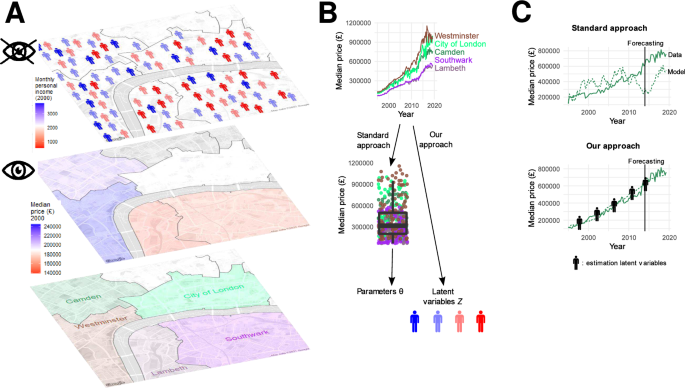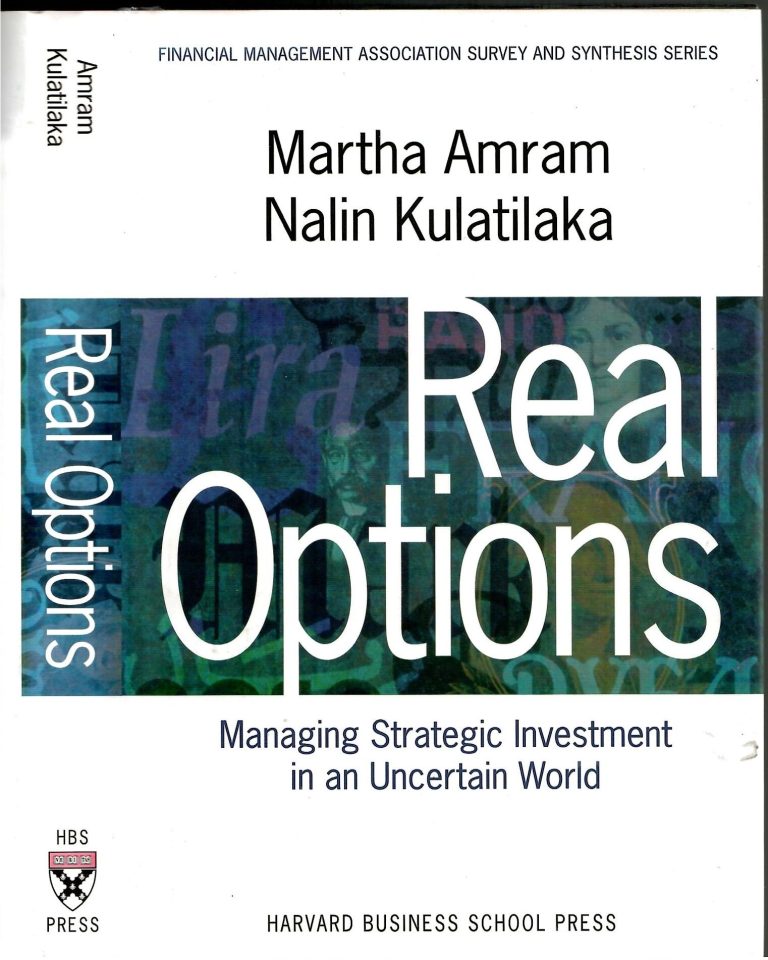Dynamically Tracking The Real World In An Agent-based Model
Dynamically Tracking The Real World In An Agent-based Model is a process of simulating the real world in a computer-based environment. It enables an individual or organization to observe and analyze the relationships between different elements in the environment, such as people, objects, and events. This process provides a powerful way to gain insights into complex systems, and to develop strategies and plans for responding to changes in the real world. In addition, it can be used to compare different scenarios and scenarios over time. This technique has been applied in various fields, including economics, ecology, sociology, and engineering.
Section 1: What is an Agent-Based Model?
Agent-based modeling (ABM) is a simulation technique used to study the behavior of individual agents in a complex system. An agent-based model (ABM) is a type of computer simulation that is used to represent the actions and interactions of agents within a system. This technique is commonly used to study a variety of real-world phenomena, such as social networks, economic markets, and natural phenomena. In an ABM, agents are autonomous and have the capacity to make decisions based on their environment. An ABM allows researchers to capture the effects of individual behavior on the larger system.
ABM is an increasingly popular tool for understanding the dynamics of complex systems, as it allows for the simulation of complex behaviors that emerge from the interactions of autonomous agents. ABM allows researchers to explore how agents, both human and algorithmic, interact with their environment and each other. By modeling the behavior of agents in different environments, ABM can be used to make predictions about how the system will evolve over time. ABM can also be used to study the effects of policy interventions on a system without needing to conduct expensive experiments.
Section 2: Advantages and Disadvantages of Agent-Based Models
Agent-based models (ABMs) have become increasingly popular in the real world due to their ability to simulate complex systems. These models are used in a variety of different fields, from economics to environmental science. With their growing popularity, however, come both advantages and disadvantages that are important to consider when using an ABM.
The main advantage of ABMs is their ability to capture the complexity of real-world systems, such as the interactions between agents. This means that they can provide insights into how different agents in a system interact with each other and how different changes in the environment can affect the outcomes of these interactions. As such, ABMs can be used to study the dynamics of a system and how it is likely to evolve over time.
On the other hand, ABMs have some drawbacks that need to be taken into account. First, they can be resource-intensive, as they require a large amount of data to be captured, processed, and simulated. Second, they can also be difficult to validate, as it can be difficult to assess the accuracy of the simulations. Finally, they can be limited by the scope of the data that is available, meaning that the results of the simulations may not be as accurate as desired.
In conclusion, ABMs can provide powerful insights into the dynamics of complex systems. However, it is important to take into account both the advantages and disadvantages of using an ABM when considering whether or not it is the right tool for the task at hand. By understanding these benefits and drawbacks, it is possible to make better decisions when designing and implementing an ABM.
Section 3: Architectural Considerations for Agent-Based Models
Agent-based models are dynamic systems that require careful consideration when it comes to architecture. It is important to understand the architecture of an agent-based model in order to ensure its accuracy and robustness. As a result, there are a few key components that need to be taken into account when creating an agent-based model.
First, the model must be able to represent the real-world environment accurately. This involves creating an accurate representation of the environment, including the physical layout, boundaries, and objects within the environment. Additionally, the model must be able to track the behavior of the agents within the environment, as well as the interactions between them.
Second, the model must be able to respond to changes in the environment and the behavior of the agents. This requires the model to be able to detect changes in the environment and respond accordingly. Additionally, the model must be able to detect changes in the behavior of the agents and adjust its behavior accordingly.
Finally, the model must be able to learn from its past experiences. This means that the model must be able to use past experiences to inform its current behavior. This requires the model to be able to learn from its mistakes and adjust its behavior accordingly.
By taking into account these architectural considerations, it is possible to create an agent-based model that is robust, accurate, and capable of dynamically tracking the real-world environment. This can be used to simulate and analyze complex systems and help understand the behavior of agents within them.

Section 4: Real-World Applications of Agent-Based Models
Agent-based models are becoming increasingly popular for tracking and understanding dynamic processes in the real world. By providing a platform for understanding complex interactions between agents, agent-based models are being used to identify patterns across a variety of disciplines from economics to epidemiology. In this section, we will explore the applications of agent-based models in the real world and identify the advantages they offer for dynamic tracking.
Agent-based models are powerful tools for understanding the behavior of agents within a certain system. By simulating the environment and interactions between agents, researchers can model and predict the outcomes of specific scenarios. Agent-based models are used in a variety of fields to analyze the behavior of individual agents within a system and to understand the effects of their collective actions.
For example, agent-based models are used in the finance industry to track the behavior of specific investors and identify patterns in the stock market. These models are also used in epidemiology to understand the spread of disease and inform public health policies. In ecology, agent-based models are used to predict the behavior of species and their interactions with their environment.
Overall, agent-based models provide a powerful platform for simulating and predicting the behavior of agents in the real world. By understanding the interactions between agents and their environment, these models can be used to identify patterns and inform policy decisions. By using agent-based models to dynamically track the real world, researchers can gain valuable insights into the behavior of agents and the implications of their actions.
Section 5: Challenges to Dynamically Track The Real World Using Agent-Based Models
Agent-based models have become increasingly popular for tracking and predicting the behavior of complex systems, from economic markets to social networks. Despite the promise of these models, they are not without their challenges. It is difficult to accurately and dynamically track the real-world when using agent-based models.
One of the main challenges to tracking the real world with agent-based models is the need to accurately represent the environment in which agents interact. It is not possible to perfectly capture the complexity of the real world in a model; certain aspects will be overlooked or simplified. As such, the model may not accurately reflect the interactions of the agents, leading to inaccurate results.
Another challenge to dynamically tracking the real world using agent-based models is the need for a large amount of data. Agent-based models require a significant amount of data to accurately reflect the environment in which the agents interact. This data must be collected in real-time and can be difficult to obtain, especially in rapidly changing environments. Furthermore, the data must be updated regularly in order to ensure the accuracy of the model.
Finally, agent-based models are computationally intensive, requiring significant resources to run simulations. This can be a limiting factor for those attempting to track the real world using agent-based models.
In conclusion, agent-based models are a powerful tool for tracking and predicting the behavior of complex systems, but they are not without their challenges. Accurately representing the environment, obtaining sufficient data, and having the necessary computing power are all challenges to dynamically tracking the real world using agent-based models.
Section 6: Strategies to Overcome Challenges for Agent-Based Models
Agent-based models are an increasingly popular way to model complex systems in the real world. The challenge lies in the fact that these models require a large amount of data, which can be difficult to collect and can also be time-consuming. Additionally, agent-based models often require large computational resources, which can make them difficult to run on a standard desktop computer. Despite the challenges, there are several strategies that can be used to overcome these challenges and allow for the successful implementation of agent-based models.
The first strategy is to collect data from multiple sources. This allows for the model to incorporate a range of data points, which can be used to accurately represent the real-world system being modeled. Additionally, collecting data from multiple sources can help reduce the computational burden of the model, as the data can be aggregated and processed in batches.
The second strategy is to use a cloud computing platform to run the model. This allows for the model to access larger amounts of computational resources, which can be used to process larger data sets and run more complex models. Additionally, cloud computing can help reduce the cost of running the model, as the cost of the resources can be spread across multiple users.
Finally, it is important to test and validate the model. This can be done by running the model against historical data and comparing the results to real-world events. Additionally, the model should be tested on a range of different data sets to ensure that it is able to accurately represent a wide variety of real-world systems. By testing and validating the model, it can be ensured that it is able to accurately represent the real-world system it is modeling.
Overall, there are several strategies that can be used to overcome the challenges associated with agent-based models. By collecting data from multiple sources, utilizing cloud computing resources, and testing and validating the model, it is possible to successfully implement an agent-based model that accurately represents the real-world system being modeled.
FAQs About the Dynamically Tracking The Real World In An Agent-based Model
Q1. What is an agent-based model?
A1. An agent-based model is a type of computer simulation that tracks the behavior of individual agents in a system. Agents are autonomous entities that interact with each other and the environment, and can be used to simulate complex real-world systems.
Q2. How does agent-based modeling help in tracking the real world?
A2. Agent-based modeling can be used to simulate the behavior of real-world systems, such as population dynamics and economic markets. By tracking the behavior of individual agents, it is possible to gain insights into the behavior of the system as a whole.
Q3. What types of data are used to track the real world in agent-based models?
A3. Agent-based models use a variety of data sources, including census data, demographic data, economic data, and geographic data. These data sources can be used to inform the behavior of individual agents within the system.
Conclusion
Agent-based models can be a powerful tool for dynamically tracking the real world. By using agents to represent different components of a system, these models can provide insight into the behavior of the system as a whole. They can help to identify patterns, identify potential problems, and suggest solutions. Agent-based models can be used in a variety of applications, from urban planning to market analysis. With the right data and modeling techniques, agent-based models can provide valuable insights into the dynamics of the real world.


